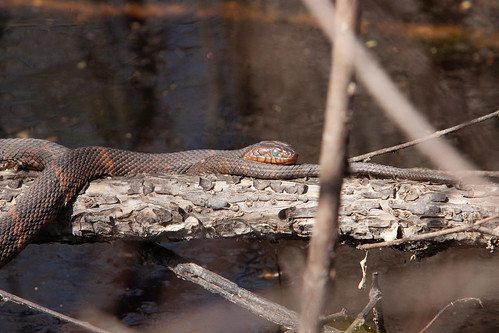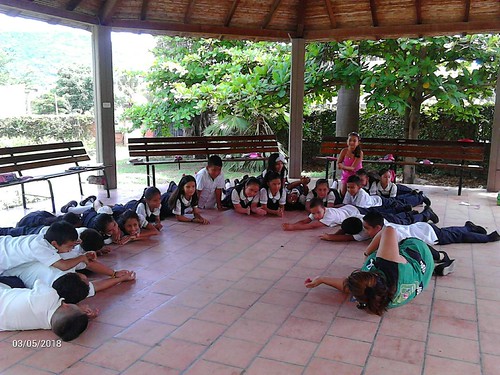As also confirmed via RTPCR.Another breakthrough study identified the pivotal function of CXCR receptor in sustaining cancer stemlike features and metastasis especially in relation to RCC. The study examined two RCC lines, RCC and RCC, derived from principal tumors of clear cell RCC (ccRCC) patients with disease stage I and IV, respectively. These differ significantly in their capability of forming tumor spheres. Beneath nonadherent conditions, RCC cells kind various spheres compared with RCC cells, which form rather poor spheres. Flow cytometry evaluation following dissociation of spheres demonstrated an enhanced fraction of CXCR cells in a prosphere culture situation compared with a monolayer culture environment. In addition, sorted CXCR cells from both cell lines have elevated Apigenin expression for stemness genes, which include Nanog, Oct, and Sox, and higher resistance to tyrosine kinase inhibitors, for instance sunitinib, sorafenib, and pazapanib . CD is usually a singlechain transmembrane glycoprotein which has a major role as an adhesion molecule for the extracellular matrix which binds mainly for the extracellular glycosaminoglycan hyaluronan CD, a cell surface antigen, has been implicated within a wide wide variety of physiologic processes including wound healing, cell growth, survival, and differentiation too as tumor cell migration, invasion, and metastasis. Some have also reported CD as CSCsTICs while this nature is still controversial (Table). In addition, clinical data have also recommended optimistic correlation in between CD expression and metastasis . Debeb et al. described many characteristics of CDCD cells as CSCsTICs which had been derived in the human embryonic kidney cell line T. Invivo observation of serially transplanted T cells showed selfrenewal and sphere formation  when cultured in a stem cellpromoting suspension culture. Moreover, CDCD cells showed elevated aldehyde dehydrogenase (ALDH) activity in threedimensional culture compared with twodimensional cell culture situations. Furthermore, the threedimensional spheres from CDCD cells were resistant to chemotherapy and radiotherapy . These findings suggest the significance of CDCD cells as CSCsTICs, however the underlying mechanisms are unclear. Comparable benefits were also reported in Rhhigh sorted cells and spheres from ccRCC cell lines O, ACHN, and Caki , and in CD cells isolated from RCC specimens .Intracellular markers in RCC Heat shock protein (HSP) family member DnaJ (Hsp) homolog, subfamily B, member (DNAJB) has a crucial function in sustaining the CICTIC phenotype in RCC and colon cancer Overexpression of DNAJB enhances the expression of stem cell markers and tumorigenicity. Epithelial (E)Ecadherin, cytokeratin, Bcatenin b CD, CD, CD, CD, CDhighly expressed on cell line not viewed as as CSC markers reduce, boost, ALDH aldehyde dehydrogenase, Bc Bcatenin, ccRCC clear cell renal cell Protirelin (Acetate) carcinoma, CSC cancer stem cell, EMT epithelial esenchymal transition, NS not specified, pRCC papillary renal cell carcinoma, RCC renal cell carcinoma, ROS reactive oxygen speci
when cultured in a stem cellpromoting suspension culture. Moreover, CDCD cells showed elevated aldehyde dehydrogenase (ALDH) activity in threedimensional culture compared with twodimensional cell culture situations. Furthermore, the threedimensional spheres from CDCD cells were resistant to chemotherapy and radiotherapy . These findings suggest the significance of CDCD cells as CSCsTICs, however the underlying mechanisms are unclear. Comparable benefits were also reported in Rhhigh sorted cells and spheres from ccRCC cell lines O, ACHN, and Caki , and in CD cells isolated from RCC specimens .Intracellular markers in RCC Heat shock protein (HSP) family member DnaJ (Hsp) homolog, subfamily B, member (DNAJB) has a crucial function in sustaining the CICTIC phenotype in RCC and colon cancer Overexpression of DNAJB enhances the expression of stem cell markers and tumorigenicity. Epithelial (E)Ecadherin, cytokeratin, Bcatenin b CD, CD, CD, CD, CDhighly expressed on cell line not viewed as as CSC markers reduce, boost, ALDH aldehyde dehydrogenase, Bc Bcatenin, ccRCC clear cell renal cell Protirelin (Acetate) carcinoma, CSC cancer stem cell, EMT epithelial esenchymal transition, NS not specified, pRCC papillary renal cell carcinoma, RCC renal cell carcinoma, ROS reactive oxygen speci
es, TNF tumor necrosis element alphaACHN, Caki, SMKTR, SMKTR, PubMed ID:https://www.ncbi.nlm.nih.gov/pubmed/1089265 and HEKT collectively with murine RENCA cells and BALB T cells from murine fibroblasts were analyzed for expression of DNAJB . The ratio of side population (SP) cells derived from ACHN and RENCA cells was . and , respectively, employing Hoechst dye staining. RTPCR analysis of these isolated SP cells showed that DNAJB was predominantly expressed with each other with Sox and POUF genes. Western bl.As also confirmed through RTPCR.An additional breakthrough study identified the pivotal role of CXCR receptor in maintaining cancer stemlike attributes and metastasis specifically in relation to RCC. The study examined two RCC lines, RCC and RCC, derived from key tumors of clear cell RCC (ccRCC) patients with illness stage I and IV, respectively. These differ drastically in their capability of forming tumor spheres. Beneath nonadherent conditions, RCC cells form many spheres compared with RCC cells, which form rather poor spheres. Flow cytometry evaluation just after dissociation of spheres demonstrated an improved fraction of CXCR cells inside a prosphere culture condition compared with a monolayer culture atmosphere. In addition, sorted CXCR cells from both cell lines have elevated expression for stemness genes, including Nanog, Oct, and Sox, and higher resistance to tyrosine kinase inhibitors, like sunitinib, sorafenib, and pazapanib . CD is often a singlechain transmembrane glycoprotein which has a major function as an adhesion molecule for the extracellular matrix which binds mostly to the extracellular glycosaminoglycan hyaluronan CD, a cell surface antigen, has been implicated inside a wide selection of physiologic processes which includes wound healing, cell growth, survival, and differentiation too as tumor cell migration, invasion, and metastasis. Some have also reported CD as CSCsTICs although this nature is still controversial (Table). Furthermore, clinical data have also suggested optimistic correlation in between CD expression and metastasis . Debeb et al. described numerous characteristics of CDCD cells as CSCsTICs which had been derived in the human embryonic kidney cell line T. Invivo observation of serially transplanted T cells showed selfrenewal and sphere formation when cultured in a stem cellpromoting suspension culture. Furthermore, CDCD cells showed improved aldehyde dehydrogenase (ALDH) activity in threedimensional culture compared with twodimensional cell culture circumstances. In addition, the threedimensional spheres from CDCD cells were resistant to chemotherapy and radiotherapy . These findings suggest the significance of CDCD cells as CSCsTICs, however the underlying mechanisms are unclear. Comparable outcomes have been also reported in Rhhigh sorted cells and spheres from ccRCC cell lines O, ACHN, and Caki , and in CD cells isolated from RCC specimens .Intracellular markers in RCC Heat shock protein (HSP) household member DnaJ (Hsp) homolog, subfamily B, member (DNAJB) has a crucial function in sustaining the CICTIC phenotype in RCC and colon cancer Overexpression of DNAJB enhances the expression of stem cell markers and tumorigenicity. Epithelial (E)Ecadherin, cytokeratin, Bcatenin b CD,  CD, CD, CD, CDhighly expressed on cell line not regarded as as CSC markers decrease, improve, ALDH aldehyde dehydrogenase, Bc Bcatenin, ccRCC clear cell renal cell carcinoma, CSC cancer stem cell, EMT epithelial esenchymal transition, NS not specified, pRCC papillary renal cell carcinoma, RCC renal cell carcinoma, ROS reactive oxygen speci
CD, CD, CD, CDhighly expressed on cell line not regarded as as CSC markers decrease, improve, ALDH aldehyde dehydrogenase, Bc Bcatenin, ccRCC clear cell renal cell carcinoma, CSC cancer stem cell, EMT epithelial esenchymal transition, NS not specified, pRCC papillary renal cell carcinoma, RCC renal cell carcinoma, ROS reactive oxygen speci
es, TNF tumor necrosis factor alphaACHN, Caki, SMKTR, SMKTR, PubMed ID:https://www.ncbi.nlm.nih.gov/pubmed/1089265 and HEKT together with murine RENCA cells and BALB T cells from murine fibroblasts were analyzed for expression of DNAJB . The ratio of side population (SP) cells derived from ACHN and RENCA cells was . and , respectively, employing Hoechst dye staining. RTPCR analysis of these isolated SP cells showed that DNAJB was predominantly expressed with each other with Sox and POUF genes. Western bl.
http://cathepsin-s.com
Cathepsins
